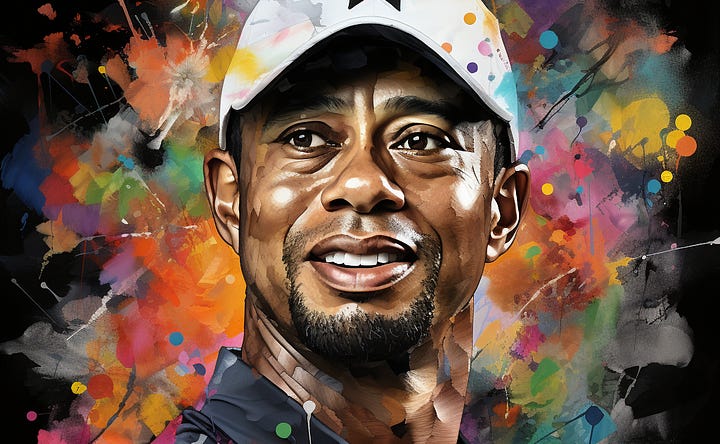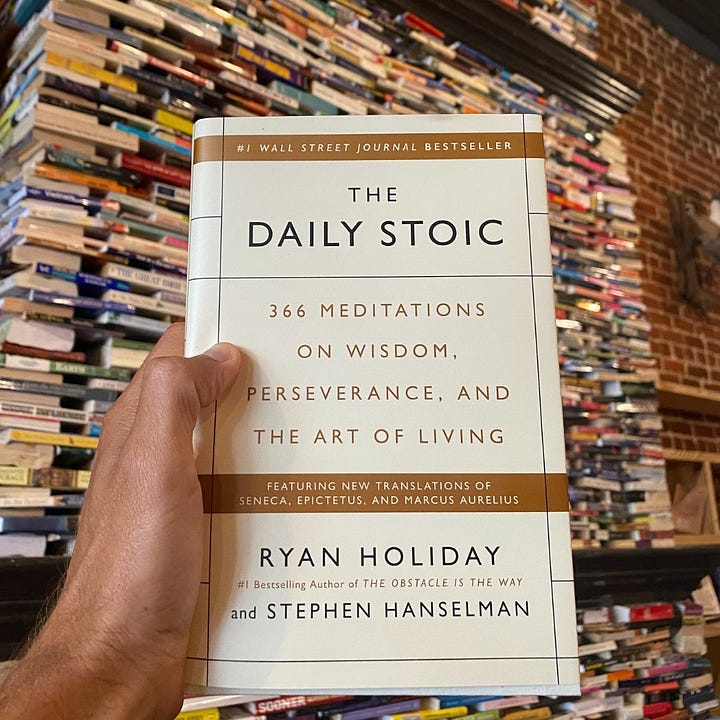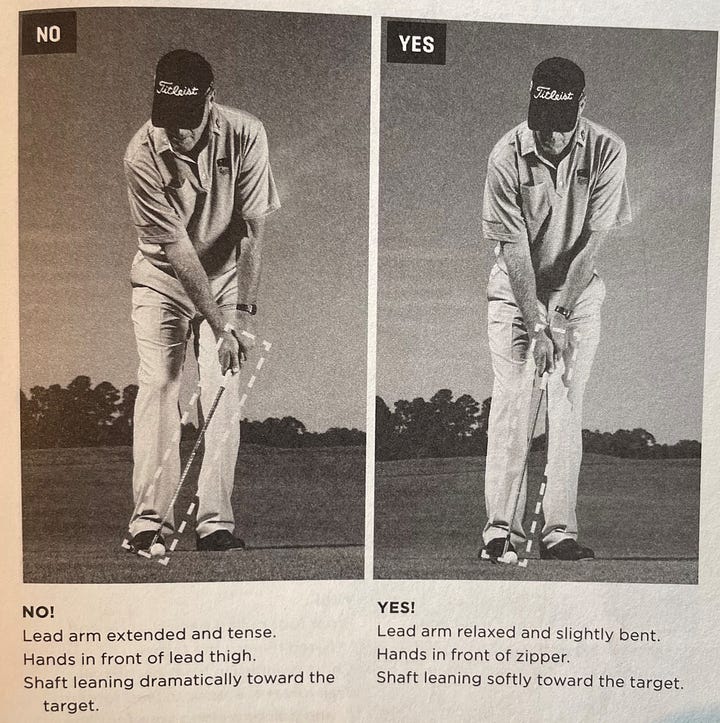The Best of October
Dead Hand Wedge, Stoic Golf, How to Chip, Goal Setting, Fitting Interview, Hottest Golf Course on Earth




The 2nd Cut Newsletter just hit 20 editions and almost 60 posts. Needless to say, the amount of content and information can be overwhelming. Also, we only have so much time in the day. So, I compiled a best-of summary to resurface some things you might have missed in the month of October.
Some sections are too long to post here, so click the link to access the full post.
Jason Day Dead-Hand Wedge
Link: Edition #17
Commentary: I love this method, and it’s been a tremendous help to my 50 yards and in wedge game.
Day is well known for having one of the best short games on tour, so much so that Tiger has consulted him at various times to work on his own short game.
I’ve shared this clip before, but Jason Day does such a good job explaining the simplicity of his dead-hand wedge method. It’s very similar to Michael Kim’s video above.
Day shows how he stays connected by using the towel drill and adjusting for low, mid, and high-pitch shots. A must-watch. (1:38 min)
How To Chip Well Consistently
Link: The 2nd Cut Mailbag
Commentary: IMO, this is worth reading in full. If you struggle with chipping, this piece explains the core fundamentals with some excellent illustrations, drills, and videos as well.
Like investing, chipping can be successfully done in many ways. Some golfers use the bounce, and some use the leading edge. Phil Mickelson prefers “the hinge and hold,” while others prefer the Sieckmann method. Some like a lob wedge, and some like to bump and run with a 7-iron.
The point is there are many ways to chip well consistently, and although they may look different, they still have a set of core fundamentals in common.
The Core Fundamentals:
Weight Forward
Stance
Connected
Bottom Line: Keep that weight forward with a narrow and slightly open stance. Shoulders should be level or tilted somewhat towards the target. Stay connected, arms glued. That’ll get you 90% of the way.
<CLICK HERE FOR THE FULL POST>
Stoic Golf
Link: Edition #18
In the book The Daily Stoic by Ryan Holiday, he discusses the dreaded feeling we get when something bad happens.
“All is lost. What follows are complaints and pity and misery — the impotent struggle against something that’s already occured.”
I’m sure this sounds familiar to many of you golfers out there. Many of us have experienced a round so bad that we basically never want to golf again. I know I have. Your desire to get back out there starts to dwindle. I’ve heard many people utter, “I think I’m going to shut it down for the year.”
We must ensure we don’t extrapolate a terrible round into the future and let it linger. Sure, you can be pissed at yourself for a bit, but then you have to let it go. I’ve had some of my best rounds just days after my worst and vice versa.
As Holiday says:
“Why bother? We have no idea what the future holds—This could be the darkness before the dawn—Whatever happens, we’re going to be OK.”
Goal Setting
Link: Goal Setting
In the book Mastering Golf’s Mental Game, Dr. Michael Lardon says to improve, we need to build a set of clear goals, both process-oriented and results-oriented. They should be attainable without being too easy.
Lardon goes on to say:
“Goals are important because they form the backbone of a positive feedback loop—one of the most effective tools you can use to stimulate the human brain. If you set clear, specific, productive goals and you improve in a measurable way toward those goals, your motivation to continue to improve increases. The more motivated you get the harder you work—and the more goals you’re able to reach.”
Lardon suggests using a Goal-Setting Matrix to organize your goals.
<CLICK HERE FOR THE FULL POST>
Interview with Club Fitter Kevin Kraft
Link: Interview with Club Fitter Kevin Kraft
Commentary: This interview was excellent. Kevin answers any fitting question you could ever ask, and gives some great golf advice as well.
T2C: I know you are in the business of fitting clubs, but how often should we be replacing our drivers, irons, and wedges?
KK: Depending on how much someone plays and practices, most drivers should last about 5-10 years. That doesn't mean that technology might not pass that driver by in that time, but drivers aren't disposable. Use for a season and trash. For an average golfer, they should easily get at least 5 years out of a driver.
When I fit a set of irons, I expect the golfer to be able to use those irons for a decade if they want to.
Wedges...I fall in line with what Bob Vokey says...after 75 rounds, you start to lose bite. Someone who plays 100+ rounds a year would do themselves a service by getting new wedges yearly. At least sand wedge and lob wedge. Those are the scoring clubs and we want the most control possible at all times!
T2C: Most people don’t think of their putter when getting fit, but you adjusted mine recently, and it was a game changer. Can you elaborate on putter fittings?
KK: Putter fitting is quick, easy and painless (mostly...everything is expensive these days!) What people need to know about putters are the following: toe hang: what amount is good for your individual stroke, loft: what is giving you the right launch conditions and therefore the right roll conditions, lie angle: which can affect launch direction & length: the eyes need to be at least nearly over the ball.
Little tweaks to putters can pay big dividends. Using Ping's putting app and Quintic Ball Roll can confirm or deny how good a putter is and help identify what changes need to be make to make putting less of a struggle.
T2C: As a high-level golfer, what would you recommend to a high handicapper to break 100?
KK: Short game. Plain and simple. If you're playing the proper tees and not hitting a ton of greens, you're going to have wedge in your hand A LOT. Practice 120 yards and in incessantly. And putt putt putt. I know it's painful. Your back can only take so much, but the importance cannot be overstated.
T2C: You’ve played in high-level tournaments against the likes of Ernie Els and others. What tips do you have in dealing with pressure or nerves on the golf course?
KK: Breathe. And just realize that: 1. This is just golf. 2. You can only control what YOU do. 3. Guys like Ernie are humans too. And I can say 100% that Ernie is a super great guy, kind, genuine and funny. 4. Just be yourself.
<CLICK HERE TO SEE THE FULL POST>
Hottest Golf Course on Earth
Link: Edition #18
At 214 feet below sea level, Furnace Creek in Death Valley, CA, is the hottest and lowest golf course on Earth. At 4:30 in the morning, it’s already 92 degrees. By 9:30, it’s 101. Somedays, the course only has 1 or 2 golfers show up. But that doesn’t stop the dedicated staff from keeping the course playable.
A fascinating story and high-quality work by the folks at @GolfersJournal
Check it out below. It’s well worth the 5-minute watch.
Have a great weekend!






